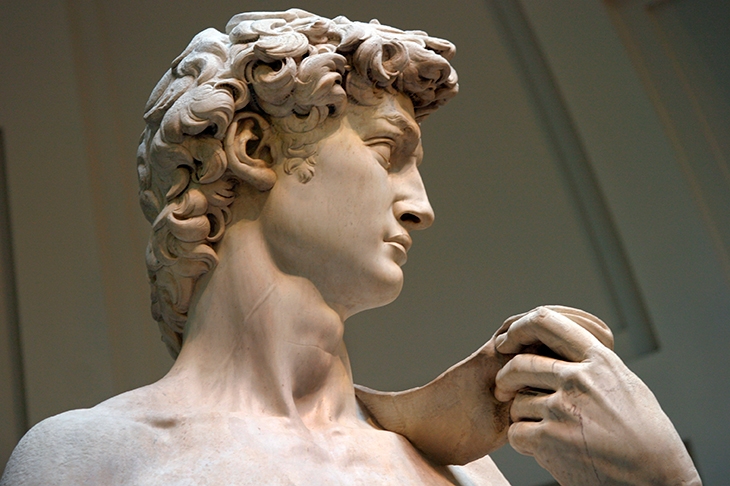‘White Lives Matter Burnley’ said the plane’s banner as it circled the club’s stadium just after the teams had ‘taken the knee’ in support of Black Lives Matter. I must admit that my very first reaction on hearing the news was pleasure at the idea that the self-righteousness of Black Lives Matter was being guyed. My second, more considered response is that the banner was bad — and for precisely the same reason that BLM is bad. It takes a statement which any decent person would consider true and turns it into a weapon of race war. Of course black lives matter. Of course white lives matter. The question is: ‘Why are you saying it now?’ The answer, in both cases, is discreditable. It is to make one lot hate the other lot more. The Burnley team said they were ‘ashamed and embarrassed’ by the aeroplane banner. They were right to be, but they should also be ashamed and embarrassed to have paid group obeisance to a violent extremist group that promotes hatred of white people.
Those wishing to rewrite our history and take down our statuary like the phrase ‘lived experience’. White people lack the ‘lived experience’ of racial oppression that black people have, they claim. There is a grain of truth in this. But there are many white people who can justly claim to have lived experience of racial oppression, often far worse than that meted out to black people in modern western countries — Bosnians at the hands of Milosevic’s Serbs, Slavs under Hitler’s Teutons, Poles under Stalin’s Russians, Jews under too many ruling ethnicities to name. But the lived experience which 100 per cent of us lack is that of the more distant past. No one alive today lived before or during the 19th century. So when we disinter (soon, I fear, literally) and dishonour the once-honoured dead, we are attacking people whose experience we have never shared, about whose conduct we should therefore display some humility. The study of history should help us to imagine the experience we lack rather than to vilify what we have not tried to understand.
One of those in the sights of Oxford iconoclasts just now is Christopher Codrington (1668-1710), slave-owner, governor, bibliomane. His enormous bequest to All Souls built the beautiful library in his name which now attracts Rhodes Must Fall-style ire. It is otherwise at Codrington College, the theological college in Barbados which he founded. Its 275th anniversary was celebrated there this month. In his sermon, the (black) Archbishop of the West Indies, Howard Gregory, spoke powerfully of Codrington’s ‘Christian example and great liberality’ and the ‘vision and generosity’ of an action which ‘placed him outside the prevailing cultural norms’ of the time. This is the moment, he went on, to ask for much more money. Anyone wishing to help can Google codrington.org and find the donation page.
I had a cousin by marriage called Lawrence Durdin-Robertson. After ten years as an Anglican parson, he returned to his ancestral home, Clonegal Castle, in Ireland. There he gradually came to the view that God had been (or rather, is) a woman. He and his sister eventually founded the Fellowship of Isis, dedicated to this proposition, whose temple is in the castle basement. Lawrence, who, as the Fellowship of Isis puts it, ‘made his transition to spirit’ in 1994, was hardline, and tended, when he saw statues of Jesus with a beard, to break the beards off. I am glad he thrived pre-Twitter, so that his ideas did not spread much further than Co. Carlow. No such luck with today’s equivalents. Shaun King is a well-known and noisy activist associated with Black Lives Matter, who fell out with some of them because there was sharp disagreement about how black he really was. Now Mr King is tweeting: ‘Yes, I think the statues of the white European they claim is Jesus should also come down. They are a form of white supremacy. Always have been. In the Bible, when the family of Jesus wanted to hide, and blend in, guess where they went? EGYPT! Not Denmark. Tear them down.’ It is only a matter of time before people of Shaun King’s mind scour our churches and cathedrals for depictions — readily available, of course — of the ‘white European’ Jesus, and do as he suggests. How will the bench of bishops react then? I suspect they will express their collective repentance for being what the Archbishop of Canterbury calls ‘deeply institutionally racist’ and take the knee amid the rubble and the dust. By the way, I suggest Mr King add Michelangelo’s David to his list: there a Middle Eastern king is disgracefully recast by a white European as a white European, uncircumcised penis and all. Tear it down!
My local Catholic church in Sussex opened on Tuesday for the first time since the lockdown. I was one of the two stewards required by the rules to supervise the process, wearing masks. Our instructions ran for 12 pages and included national safeguarding advice with contact numbers for organisations such as Southall Black Sisters and the National Stalking Helpline. Only private — as opposed to collective — prayer was permitted, and no prayer could be spoken out loud. The Blessed Sacrament was exposed on the altar. Alternate pews were roped off and worshippers were asked to enter by the centre aisle and depart by looping round to the side ones. They were told to leave their guidance sheets where they had sat, so that we would know which surfaces to disinfect afterwards. Ten people came. It was touching to see their eagerness after such long deprivation: it was like physical hunger. Despite the elaboration of the preparatory detail, I would say the overall effect was worthwhile. The good order helped restore for people, many of them self-isolated, a confidence which had been knocked out of them by the past four months. Later that day came the news that collective worship will no longer, from 4 July, be a criminal offence.







Comments